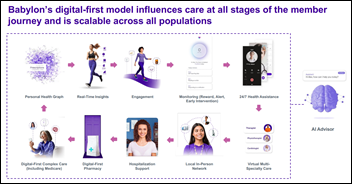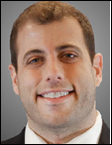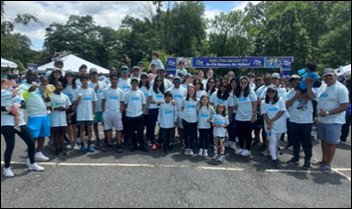I mentioned a few weeks ago that I have been having issues with my health system’s online billing functions. I was receiving paper statements before I received the online bills and couldn’t figure out how to adjust it so that I didn’t get paper statements.
At a recent visit, I asked the staff to see if they could adjust it on their side, and they said they would try. Interestingly, they also refused to accept my co-pay at the time of service, which is a big negative as far as revenue cycle management, so I wasn’t hopeful that they’d be able to get my account set up in a best practice fashion.
It looks like the “turn off paper statements” piece worked because I received an online invoice today. It included the co-pay (no surprise there) but also an unexpected co-insurance amount that doesn’t match how my insurance works. I haven’t even received the Explanation of Benefits document yet, so I’m not about to pay it. We will have to see how this cycle continues to unfold.
We had some family adventures in healthcare this weekend, with an unexpected injury that required attention beyond what I could manage with my first aid kit. Of the urgent care facilities in the area, some had spots available for online check-in, but others didn’t. Since we wanted a minimal wait, we opted for the one that was displaying available capacity, which is also an organization that I know fairly well.
As expected, walking in with a bleeding injury of the head puts one at the front of the line whether you have an appointment or not. Unfortunately, the provider wasn’t a great communicator and was mentioning how busy she was and how many other patients she was tending to rather than making the patient feel at ease.
She tried to downplay the injury a little, but fortunately the patient followed my advice and advocated for the treatment that is actually standard of care – they only knew that because I had prompted them after evaluating the injury and referring them to in-person care. The alternative treatment offered is typically less time-intensive for the provider, but results in poorer outcomes for this specific patient scenario. Most patients don’t know the difference, and it’s sad when our healthcare system is repeatedly putting time pressures ahead of patients.
After resolving the situation, we headed out for some Father’s Day celebrations, and then I came home to catch up on some work. It was timely that Mr. H called out this New York Times story on the level of moral crisis that physicians in the US are facing. Not a day goes by that I don’t hear a story from a colleague about this issue.
I’ve worked for organizations whose relentless focus on profits led to inappropriate prescribing behaviors as well as excessive ordering of tests. In one urgent care position, management justified these actions by saying, “we’re still only one-sixth the cost of a visit to the emergency department” and regularly presented me with reports that illustrated how much of an outlier I was to my peers when looking at the sheer number of prescriptions ordered. It should be noted that this organization had its own in-house pharmacy for which it didn’t submit insurance claims, so all prescriptions generated revenue.
From a conscience standpoint, by the time I worked for this organization, my prescribing habits were well established. I didn’t fall into the trap of trying to keep up with my peers in a way that didn’t make sense for clinical quality. Due to my training and prior experience, I also tended to make more clinical diagnoses using decision support tools and algorithms rather than tests and imaging studies, so of course that was an issue as well.
Eventually the organization figured out that my clinical skills and procedural abilities allowed me to see patients at a pace and volume that still made them money, so they left me alone, and eventually, the reports stopped coming my way. At the same organization, I also had to deal with some occasional patient safety issues as they encouraged me to practice outside my comfort zone with certain procedures, forcing me to have difficult conversations about my refusal to treat patient care like the Wild West.
Once they transitioned from being physician-owned to being owned by non-clinical investors, I knew my time there was limited. Others saw the writing on the wall as well, and now the organization can’t even keep its locations staffed. Not because there’s a shortage of clinicians, but because there’s a shortage of those who want to work there.
The article details many of the issues I’ve run across while in practice or in talking with my colleagues. Physicians are reluctant to speak out when they find themselves in these situations, because it’s been reinforced that they need to be team players, or they have experienced that reporting their concerns can lead to retaliation.
Former physician peers have lied on exit interviews because they were afraid that what they said would make the rounds in the physician lounge and come to haunt them in their new positions. Even in large cities, the physician community can be small. Powerful physicians on a given hospital’s medical staff can make things difficult for physicians who are younger, newer, or who otherwise have less political clout.
When I initially entered practice, I was once called out by a senior physician who felt I wasn’t giving him enough referrals and demanded to know why. I’m not sure who I could have complained to about that since he was not only chair of his department, but president of the medical staff.
That situation is relatively mild compared to some of the pressures that physicians experience today, especially those who work in segments that are largely controlled by private equity organizations or who are under strict productivity models for their compensation. Many physician contracts have clauses that would be problematic for other classes of employees.
I was recently presented with a contract that specified compensation based on the concept of a 12-hour shift, with no extra pay for additional time spent. When I asked for the language to be changed, I was told no, that all the other physicians already working had agreed to it and they weren’t willing to alter it. Needless to say, I won’t be working for that organization. Whether they’re lying about what other physicians have agreed to or just being difficult, it’s a decent indicator that they don’t value their physicians’ time. I guarantee they wouldn’t offer that contract to a nurse.
When physicians don’t feel valued, it creates psychological challenges that make it difficult to deliver good patient care. Whether consciously or subconsciously, decisions are made in the heat of the moment that can impact patient care but are based on the provider’s current situation.
I suspect that’s what my family member experienced today, when they were offered two different but non-equivalent management plans with a comment that it was up to the patient to decide. The difference in the clinician’s time was about 10 minutes, but sometimes that 10 minutes is what keeps you from going to the bathroom, eating lunch, or taking care of two more patients waiting for care. It’s a sad commentary on what many of us are facing every single day with patients caught in the middle.
If you’re in a non-clinical role, do you consult clinical colleagues for advice prior to seeking care for yourself or a loved one? Have you had to advocate for yourself or someone else for medical care in the last year? Leave a comment or email me.

Email Dr. Jayne.
Comments Off on Curbside Consult with Dr. Jayne 6/19/23


































I dont think anything will change until Dr Jayne and others take my approach of naming names, including how much…